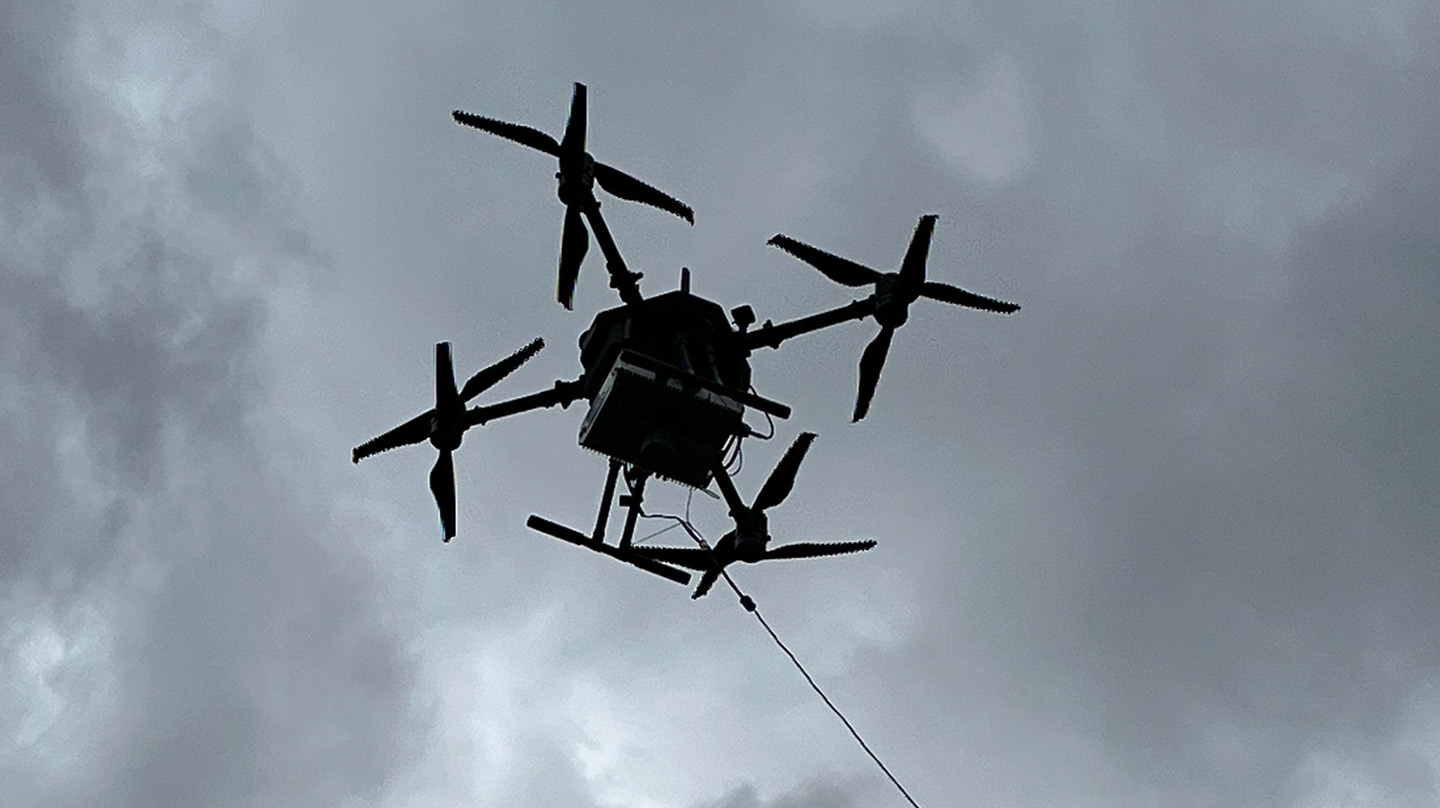News
Nimble Cellular Networks Keep Tactical Users Connected
Audio generated using AI voice technology.
The Johns Hopkins Applied Physics Laboratory (APL) in Laurel, Maryland, is contributing to the development of a prototype miniaturized cellular system that may one day keep warfighters and first responders connected in austere environments.
The goal of the Standalone On-the-Move Advanced Relay (SOAR) program is to design a 5G system small enough to be carried in a drone to provide cellular network capabilities across an area up to 100 square miles (259 square kilometers).
SOAR originated in 2020 after Congress urged the Department of Defense (DoD) to develop a tactical 5G system. Such systems are attractive because they keep costs down by allowing the military to control a variety of devices — especially drones — with cheaper radios, said Sean Brassard, an engineering program manager in the DoD Special Operations Program Area at APL.
Costs for issuing military radios in quantity can be minimized by equipping them with cellular modems, which are less expensive than traditional tactical radios. Cellular systems are more bandwidth efficient than current tactical radios, and 5G offers more spectrum for the DoD to use, providing access to frequencies beyond the reach of current tactical radios.
“Going for a cellular modem is also attractive because you can change out the modems as technology improves instead of replacing the whole radio,” Brassard explained.
The DoD also has strategic reasons for shifting to cellular. Operations in the U.S. Indo-Pacific Command region will require forces to be spread out over a large geographic area, but those units need the ability to communicate locally and reach back to other DoD networks.
Miniaturization Challenges and Applications
The focus of the SOAR effort is to make a 5G cellular relay small enough to install in a Group 2 uncrewed aerial system (UAS), which the DoD classifies as a drone weighing 21 to 55 pounds (about 10 to 25 kilograms) and able to reach an altitude of 3,500 feet (1,067 meters). To fit on such a small platform, the entire package — including the antenna, mechanical box and heat-dissipation systems — must be under 10 pounds (about 5 kilograms) and able to “fit in half a shoebox.”
“Bringing 5G infrastructure onto a Group 2 uncrewed system permits some of our smallest and most mobile teams to deploy cutting-edge wireless communications infrastructure into remote and austere locations. Even more importantly, where adversaries can see and target us, it enables a new level of mobility for that infrastructure,” said Daniel Silvera, deputy mission area executive for Special Operations at APL.
For system development, APL is working in collaboration with NxGenComm, LLC, to make use of its advanced commercial 5G baseband system and augmenting it with radio-frequency capability that better suits austere, tactical environments.
Such capabilities are well aligned with APL’s expertise, Brassard said, noting that the Lab previously oversaw development of a mobile 5G relay system — consisting of a 10-kilowatt generator with large equipment racks and a mast loaded into the back of a Ford F-350 pickup truck — that was delivered to the U.S. government in December 2020.
The miniaturized mobile cellular system is currently being demonstrated to the U.S. Army and U.S. Marine Corps. The program’s next step is making the cellular system work in tactical environments. This entails making the equipment more flexible and resilient — “a big ask for such a small system,” Brassard said, because it pushes the boundaries of what can be done from a computational and radio frequency perspective.
The SOAR system can be used for both tactical military missions and disaster relief in areas where communications are down. This was demonstrated to the Oklahoma National Guard for tornado relief operations. Because the system can be placed in a small UAS or a balloon tethered at several thousand feet, it can provide cellular coverage for 100 square miles.
Next Steps
The first completed version of the prototype SOAR 5G system was demonstrated this April and was field tested with the Army in September, with one additional demonstration planned for this year.
Brassard noted that the project is about to enter a new phase funded by the Army and the Pentagon, with the goal of building a second version of the system. He added that the Army wants the system demonstrated to its Futures Command because both the Army and Marine Corps consider SOAR a potential means to control robotic devices.
“They’re looking at similar use cases of how we would control a lot of these different devices out in the field remotely,” he said.
Army testing involves a tethered drone that is connected to a power cable, allowing the UAS to operate for hours. All of this year’s demonstrations will use the tethered drone.
As a next step, the Army wants to work with APL to install and test the system on a free-flying UAS operating at several thousand feet. These plans are tentatively set for next year, Brassard said.
